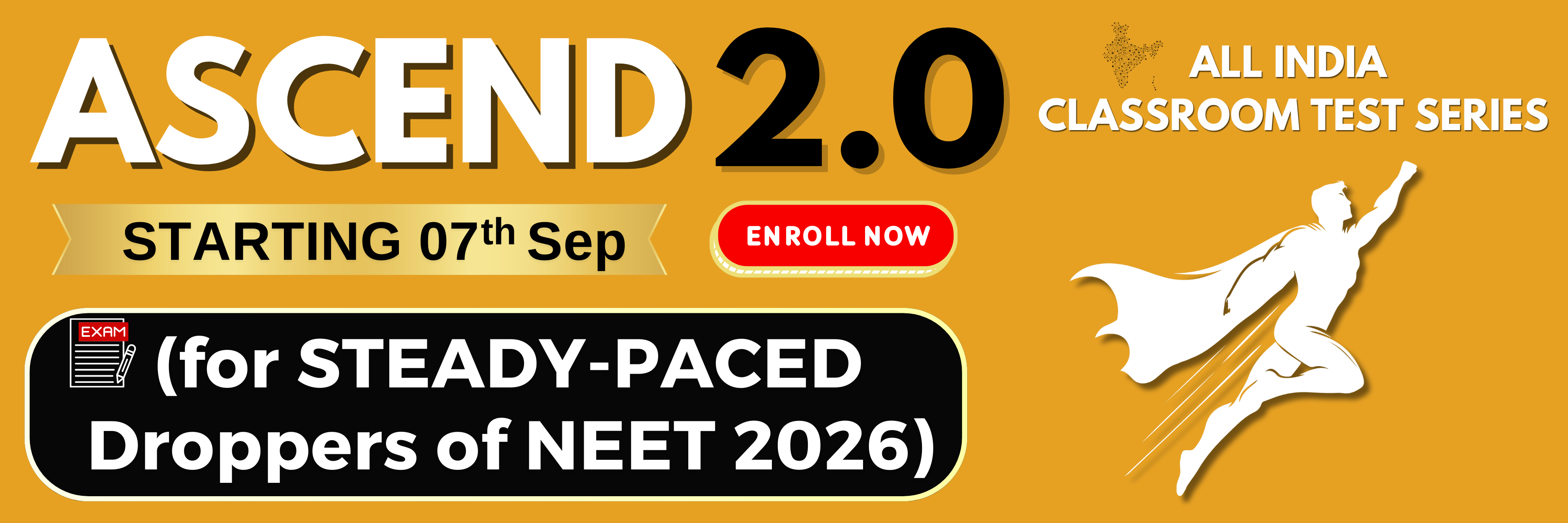Select Chapter Topics:
The number of olefinic bonds in the given compound is/are:

1.
1
2.
3
3.
2
4.
4
Subtopic: Aliphatic Hydrocarbon -Nomenclature, Isomerism & Mechanism | Alkanes, Alkenes and Alkynes - Conformations and Hybridisation |
54%
Level 3: 35%-60%
Please attempt this question first.
Hints
Please attempt this question first.
The minimum number of carbon atoms in an alkane having four primary carbon atoms are:
1. 4
2. 8
3. 5
4. 6
1. 4
2. 8
3. 5
4. 6
Subtopic: Aliphatic Hydrocarbon -Nomenclature, Isomerism & Mechanism |
63%
Level 2: 60%+
Please attempt this question first.
Hints
Please attempt this question first.
Isomers which can be interconverted through rotation around a single bond are:
1. Conformers
2. Diastereomers
3. Enantiomers
4. Positional isomers
1. Conformers
2. Diastereomers
3. Enantiomers
4. Positional isomers
Subtopic: Alkanes, Alkenes and Alkynes - Conformations and Hybridisation |
86%
Level 1: 80%+
Please attempt this question first.
Hints
Please attempt this question first.
Which of the following will have least hindered rotation about carbon-carbon bond?
| 1. | Ethane | 2. | Ethylene |
| 3. | Acetylene | 4. | Hexachloroethane |
Subtopic: Alkanes, Alkenes and Alkynes - Conformations and Hybridisation |
76%
Level 2: 60%+
Please attempt this question first.
Hints
Please attempt this question first.
Identify the correct order of reactivity in the electrophilic substitution reactions of the following compounds:


| 1. | 1 > 2 > 3 > 4 | 2. | 4 > 3 > 2 > 1 |
| 3. | 2 > 1 > 3 > 4 | 4. | 2 > 3 > 1 > 4 |
Subtopic: Aliphatic Hydrocarbon -Nomenclature, Isomerism & Mechanism |
79%
Level 2: 60%+
Please attempt this question first.
Hints
Please attempt this question first.
The structure of compound D in the given sequence of reaction is:
\(\small\mathrm{CH_3(CH_2)_4CH_3 \xrightarrow [773 K, 10-20 atm] {Cr_2O_3/Al_2O_3}A \xrightarrow {Br_2/Fe} B \xrightarrow [ether]{Mg} C \xrightarrow {H_2O} D}\)
\(\small\mathrm{CH_3(CH_2)_4CH_3 \xrightarrow [773 K, 10-20 atm] {Cr_2O_3/Al_2O_3}A \xrightarrow {Br_2/Fe} B \xrightarrow [ether]{Mg} C \xrightarrow {H_2O} D}\)
| 1. |  |
2. |  |
| 3. |  |
4. |  |
Subtopic: Aromatic Hydrocarbons - Benzene - Structure, Preparation & Chemical Reactions |
56%
Level 3: 35%-60%
Please attempt this question first.
Hints
Please attempt this question first.
The example of dehydrohalogenation reaction among the following is:
| 1. | \(\mathrm {CH_3-CH_2-OH \xrightarrow [\Delta] {Cu} CH_3CHO}\) |
| 2. | \(\mathrm{CH_3-CH_2Br \xrightarrow [\Delta] {Base} CH_2=CH_2 }\) |
| 3. |  |
| 4. | \(\mathrm{CH_2=CH_2 \xrightarrow [Pt] {H_2}CH_3-CH_3 }\) |
Subtopic: Alkanes, Alkenes and Alkynes - Chemical Properties |
82%
Level 1: 80%+
Please attempt this question first.
Hints
Please attempt this question first.
The number of moles of hydrogen will be required for the complete hydrogenation of one mole of the following compound is:


| 1. | 6 | 2. | 7 |
| 3. | 5 | 4. | 3 |
Subtopic: Alkanes, Alkenes and Alkynes - Chemical Properties |
72%
Level 2: 60%+
Please attempt this question first.
Hints
Please attempt this question first.
Which of the following methods cannot be used to yield ethane?
1. Heating methyl iodide with sodium metal in ether.
2. Hydrogenation of ethene.
3. Sodium acetate on Kolbe’s electrolysis.
4. Hydrolysis of CaC2.
1. Heating methyl iodide with sodium metal in ether.
2. Hydrogenation of ethene.
3. Sodium acetate on Kolbe’s electrolysis.
4. Hydrolysis of CaC2.
Subtopic: Aliphatic Hydrocarbon - Methods of Preparation |
74%
Level 2: 60%+
Please attempt this question first.
Hints
Please attempt this question first.
Which of the following statements about alkynes is incorrect?
| 1. | The first three members are gases. |
| 2. | All alkynes are odourless. |
| 3. | All alkynes are colourless. |
| 4. | Alkynes are lighter than water and immiscible with water. |
Subtopic: Aliphatic Hydrocarbon- Physical Properties |
Level 3: 35%-60%
Please attempt this question first.
Hints
Please attempt this question first.
Select Chapter Topics:






